It is through the aesthetic design and formation of text that language becomes visible. The visual impact of type is sometimes neglected, yet text is an eminently aesthetic form. For typographers, type is “the letter that is the basic element of [their] trade.” These designers spend endless hours carefully researching, sketching, and engineering new generations of fonts. Tapiwanashe Sebastian Garikayi believes that a typographer must consider these questions prior to preparing a font design: what does a typeface aim to do? To whom does it speak to? What are the languages that it covers?
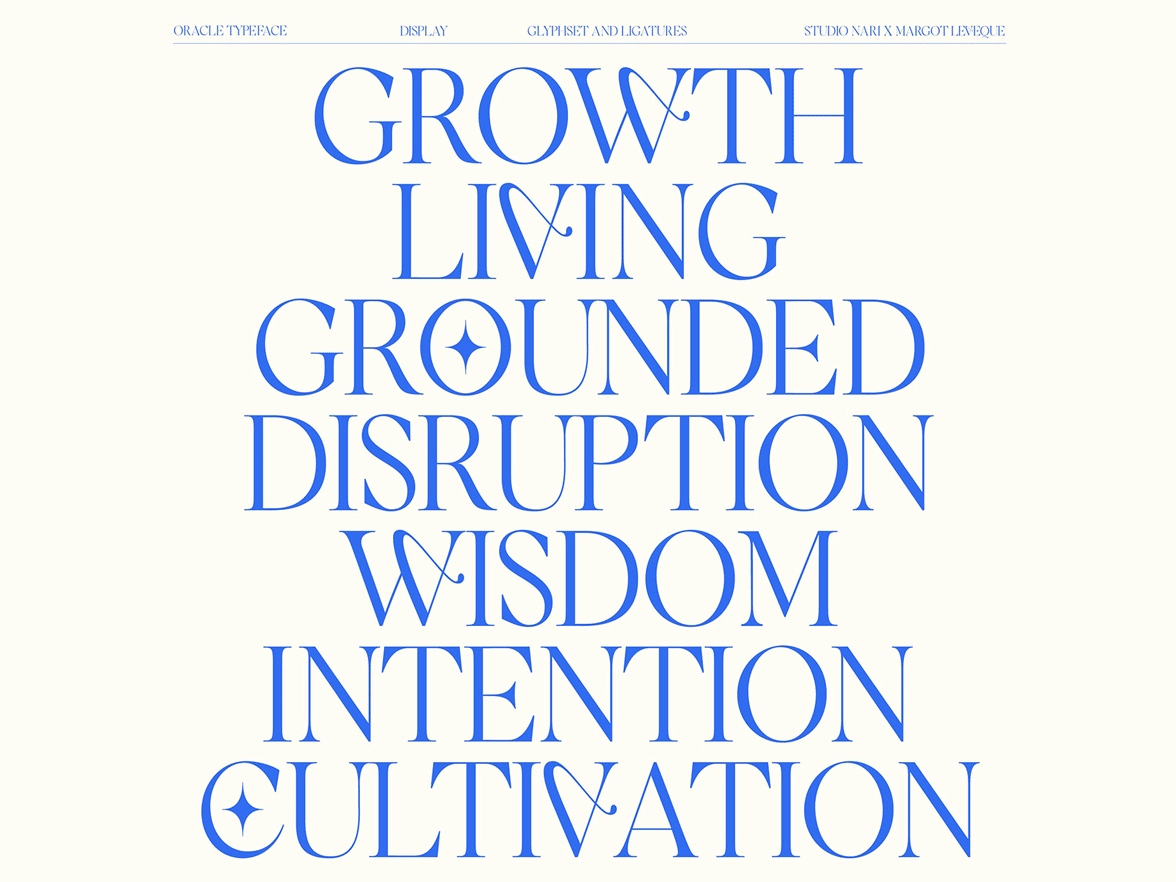
Every typographic element that formulates a particular font––the curves of round swashes, the addition of formal serif marks, and the consistent alignment of letters’ legs––aid in the way that text, which utilizes the font face, communicates and mediates written, visual, and perceptual language. Typographic elements add character to semiotic to semantic language.
Text as Visual Language
The history of typography is extensive. Dating back to ancient periods, humans from every sector of the world have used glyphs, symbols, calligraphy, and variations of type to formulate language, communication, and meaning. In the 21st century, the evolution and popularization of photographic technologies have brought images to the forefront of visual culture and semiotic language. Today, the vast portion of knowledge and language sharing happens through the production and circulation of visual images and photographs on social media channels. In recent years, however, there has been a popular resurgence in the usage of text-based imagery on networking (and traditionally photographic) platforms.
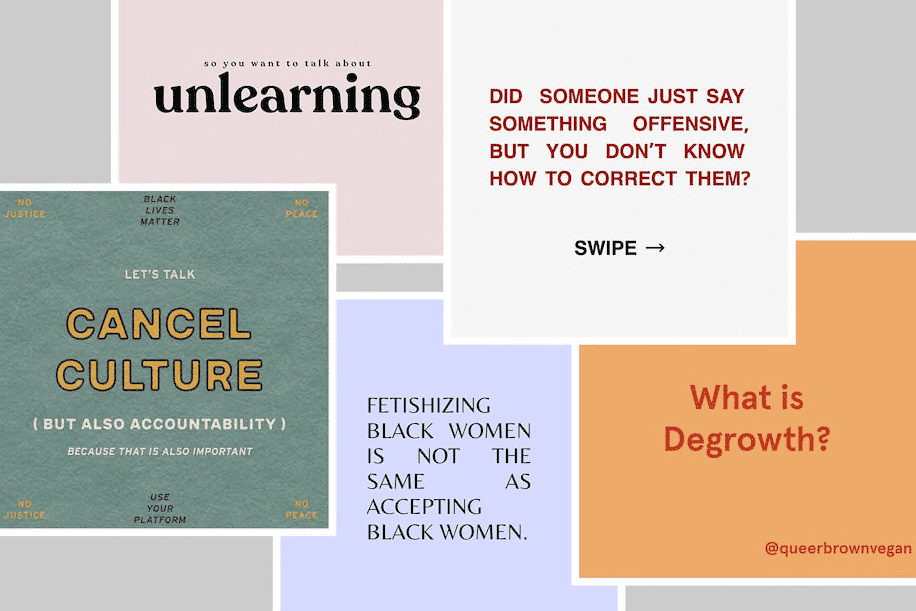
Instagram accounts such as soyouwanttotalkabout and antiracismdaily creatively design and share infographics to millions of followers. In bringing the medium of text-based art to the forefront of knowledge sharing on Instagram, these accounts highlight awareness of poignant social and political conditions of our time. Vox calls this graphic shift on Instagram PowerPoint activism as creators use the multiple post feature to create slideshows that “are bold and eye-catching,” which “feature colorful gradients, large serif fonts, pastel backgrounds, and playful illustrations––design choices intended to pause a user’s scroll and prompt them to read the text.”
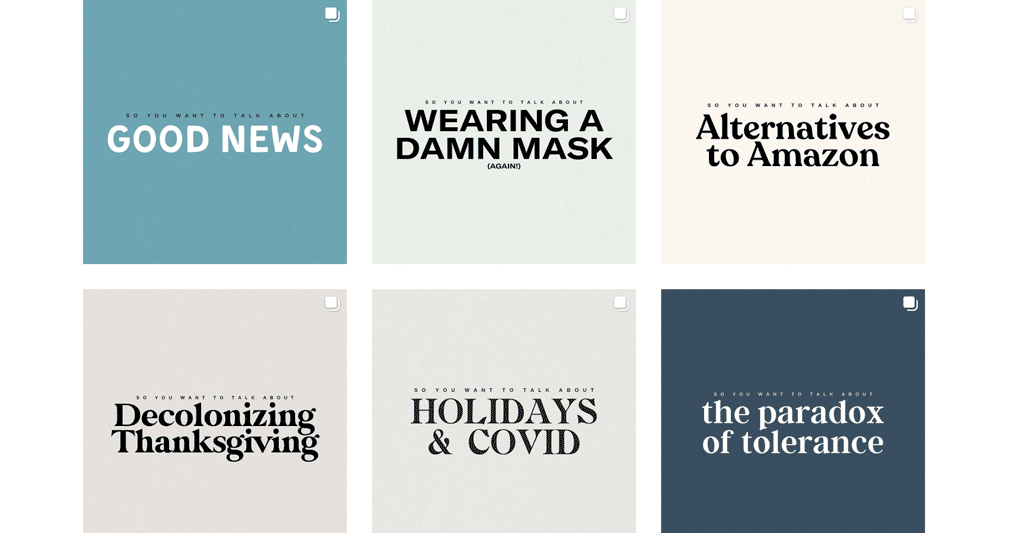
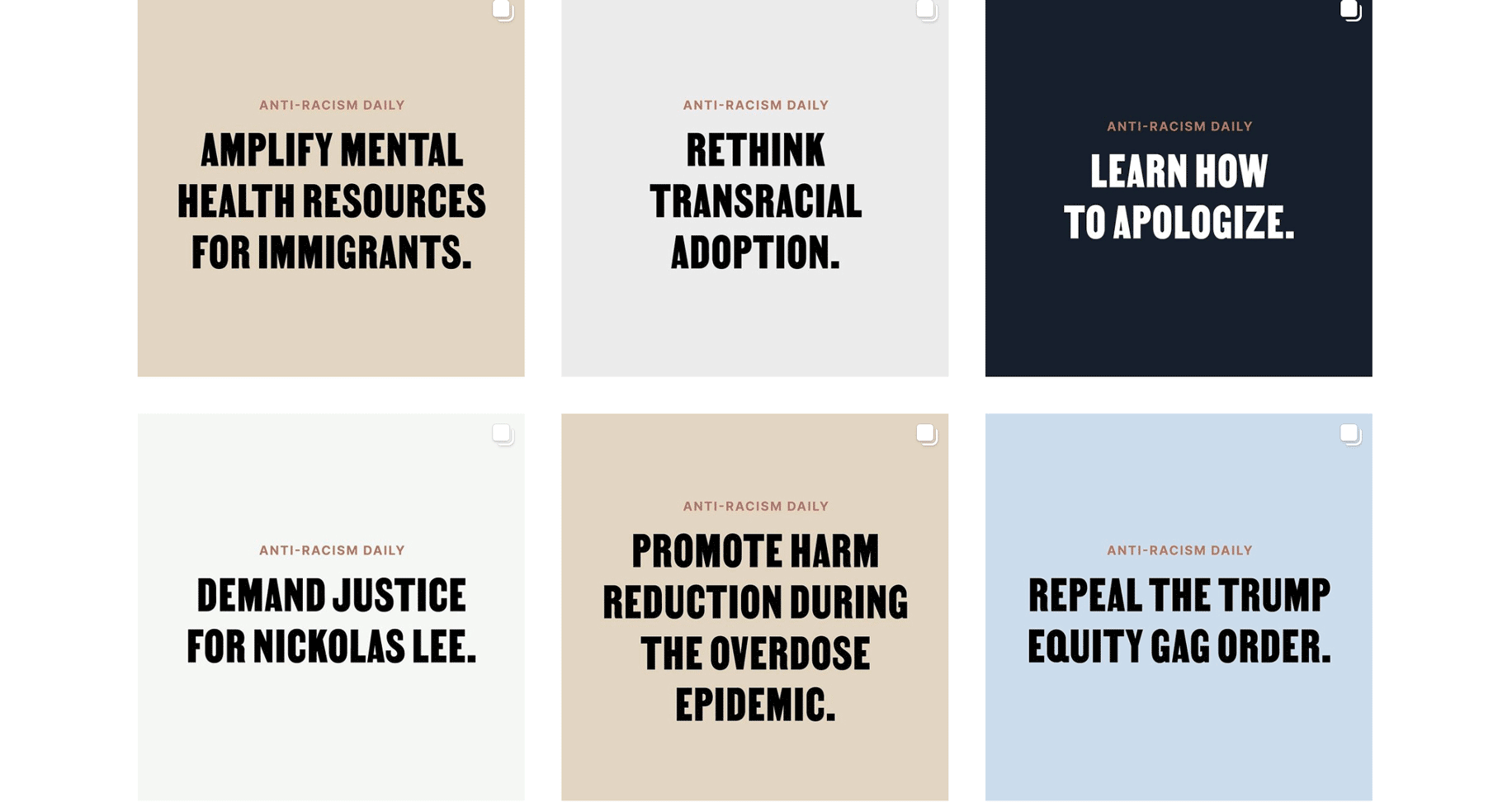
According to Washington Post contributor Kelsey Ables, “people have turned to social media to learn about topics and histories they did not even know they had missed. Infographic influencers, as you might call them, have become the leaders of this exercise in DIY education, repurposing tools from marketing or human resources jobs and drawing on their own personal experiences to explain anti-racist ideas to a growing audience,”–– an audience “concerned with substantive ideas.” While there is a concern for how these accounts adopt a commercial design aesthetic––one traditionally used to aid in the selling of “a product, a vision, or even an ideology,” these posts, “seek to make academic or activist terminology more accessible.” There is something about these minimalistic, type-focused, graphically-designed images that allude to, speak to, and provide meaning to substantial groups of diverse individuals in affective and effective ways.
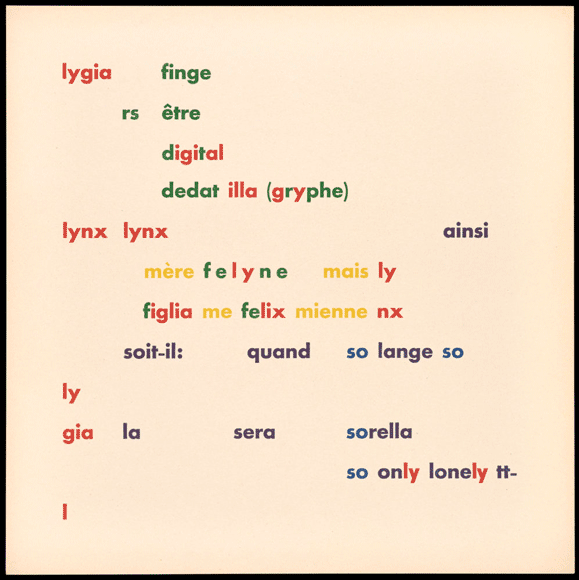
Text-based Art as Conceptual and Contemporary Practice
The presence of text-based art in visual culture is not fleeting. For centuries poets and literary artists have experimented with the visual capabilities of text–– working with words to devise textual configurations, semiotic imagery, and (concrete) visual poetry. Since the early twentieth century, modern, conceptual, and contemporary artists have incorporated text into their images. By the mid-twentieth century, artists started to manifest minimalist artworks with subject matter solely dedicated to text. Between the 1960-1970s, the era of conceptual art popularized. The conceptual movement favoured defining artworks as ideas rather than objects, thus the era championed “a dematerialization of the art object.” Ruth Blacksell articulates that this ideological shift is “connected to the collapse of Clement Greenberg’s notion of medium-specific modernism and the emergence of a new art critical position, which moved away from the idea of the passive spectator looking at a pre-existing artwork toward the idea of an active spectator engaged somehow in the physical and/or conceptual creation of the work” (115).
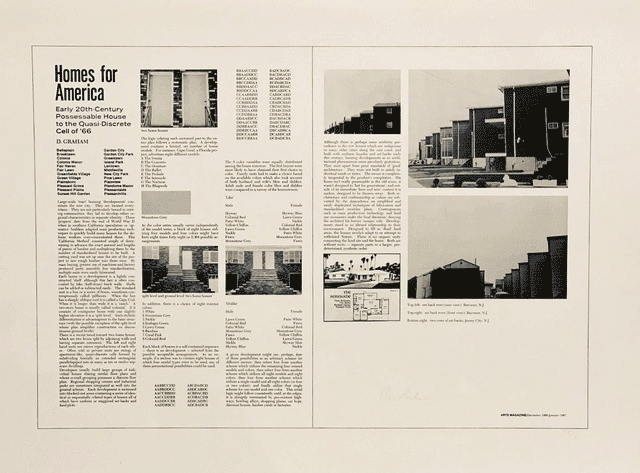
An artistic “turn to language” embodied artists’ efforts to employ various emerging and intersecting theoretical and philosophical concepts regarding language, authorship, semiotics, and printed matter into their practices. Furthermore, as Blacksell contends, text-based art is intriguing to conceptual artists as it engages spectators to encounter artworks through “the active process of reading rather than through any particular form of visual contemplation” (115). Additionally, through text-based art, early conceptual artists sought to reflect on the popularization of commercial-printed matter such as magazines and mass printed documents. Blackwell states that new publishing formats aided in creating, “a different kind of location for art, as well as a different kind of audience – one that would be receptive (whether knowingly or not) to the positioning of works within these kinds of printed matter” (117). In various seminal conceptual artworks, the subject matter of text is derived through diverse aesthetic forms and materials. Likewise, the materials used to create text-based art are often directly co-opted from commercial media practices.
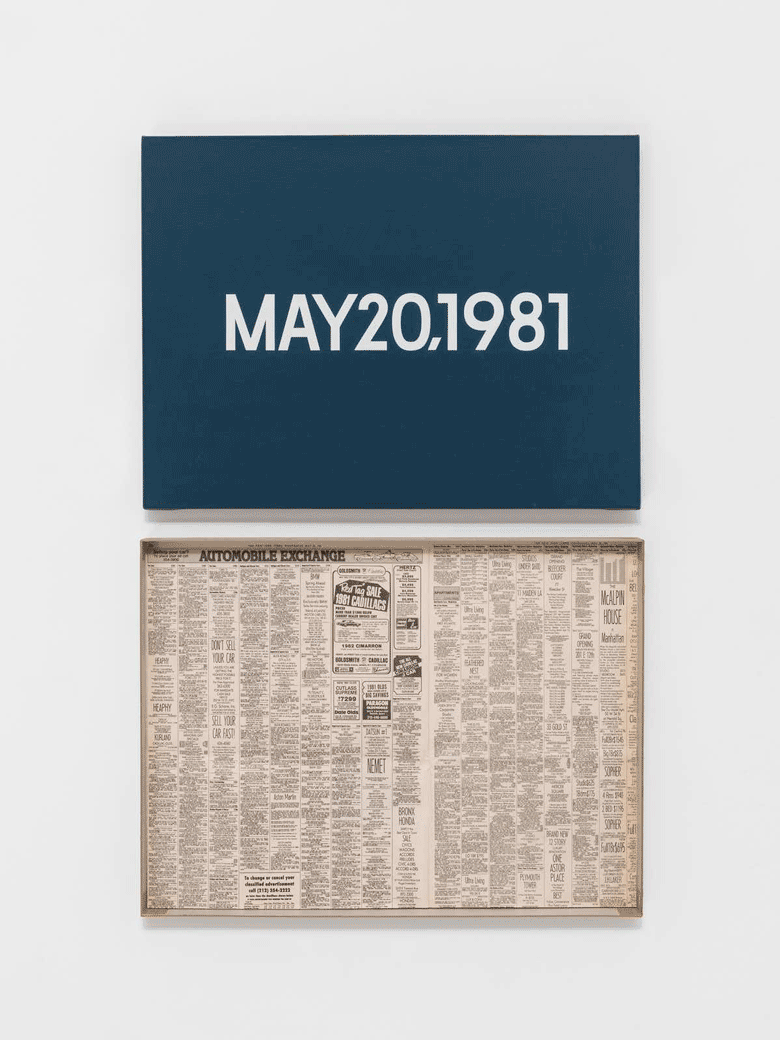
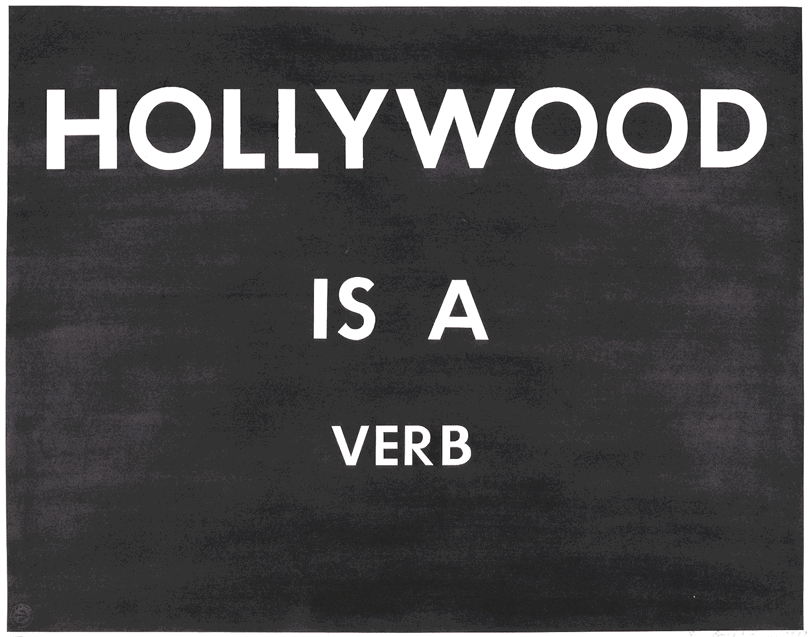
The conceptual artists On Kawara and Ed Ruscha are among a group of artists who crafted text-based artworks by meticulously hand-painting graphic canvases. Over the past several decades, text artists have utilized paintings techniques, which mimic the commercial practice of sign painting––like Ed Ruscha, Lawrence Weiner, and John Baldessari––while others–– including Jenny Holzer, Tracy Emin, Barbara Kruger, Erica Baum, and Bruce Nauman––co-opted the use of disparate commercial materials such as vinyl, neon, banners, and printed matter in their expansive oeuvres of work. Moreover, the aesthetic fonts utilized by specific artists are conspicuous as many artists repeatedly used, and even designed, distinct typefaces in their work. For instance, American conceptual artist Lawrence Weiner drew his original typeface called Margaret Seaworthy Gothic, which recurs frequently in his practice.
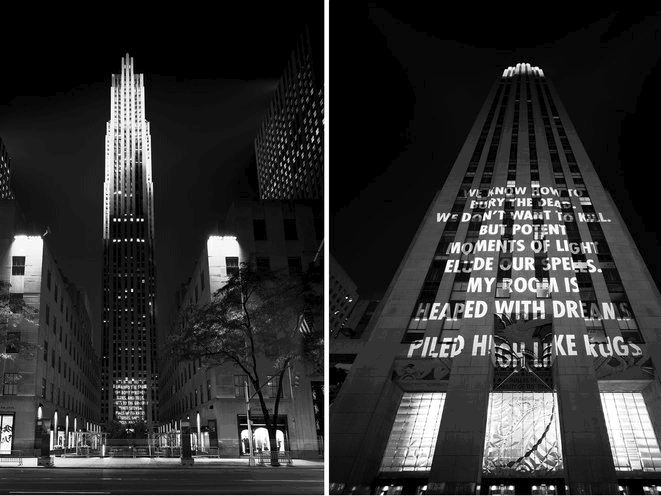
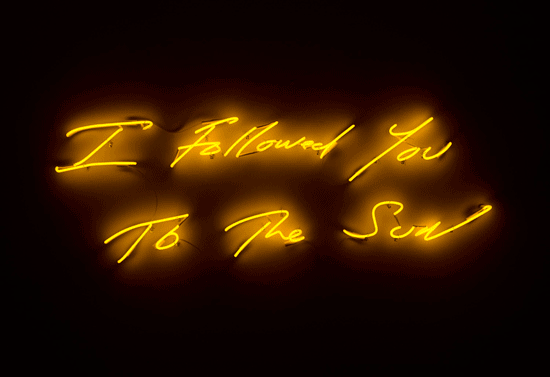
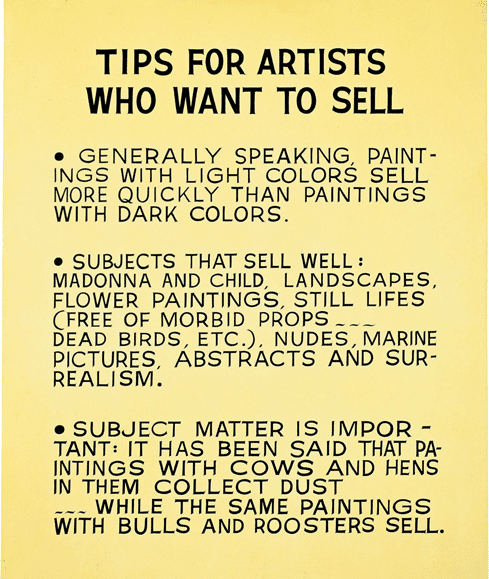
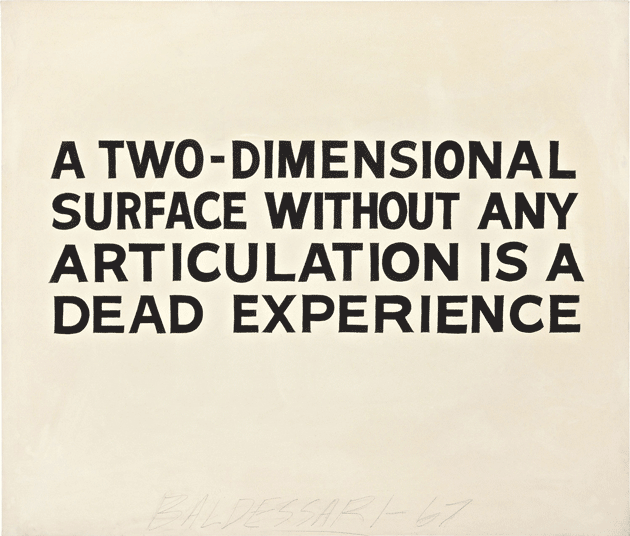
California artist, John Baldessari (1931-2020) is an icon of American conceptualism. Throughout his career, he continuously searched to redefine artistic language, critique, and process. MoMA expresses that “Baldessari thought about his painting activity and realized that texts—intellectual, occasionally ironic strings of words in particular—could often express artistic solutions better than representational paintings.” While he regularly created artworks that highlighted photographic manipulation and encouraged text-image comparisons, Baldessari also made pure text paintings that dismantle common perceptions of painting as a high craft and original medium. Like many of his conceptualist colleagues, Baldessari “hired a commercial sign painter to produce the lettering on his canvases, upsetting the notion that the artist's hand in creating art is as important as the look of the artwork itself.” Furthermore, through the use of appropriated, instructional, and provocative text, his paintings encourage different “ways of seeing,” and ultimately perceiving. His work Pure Beauty invites the viewer to question the notion of beauty, and as curator Leslie Jones states, the work conveys the idea “that pure beauty is whatever you want to envision in your head.” Rather than showing viewers a noteworthy pictorial image, Baldessari uses text to engage viewers into a subjective contemplation of painting and art.
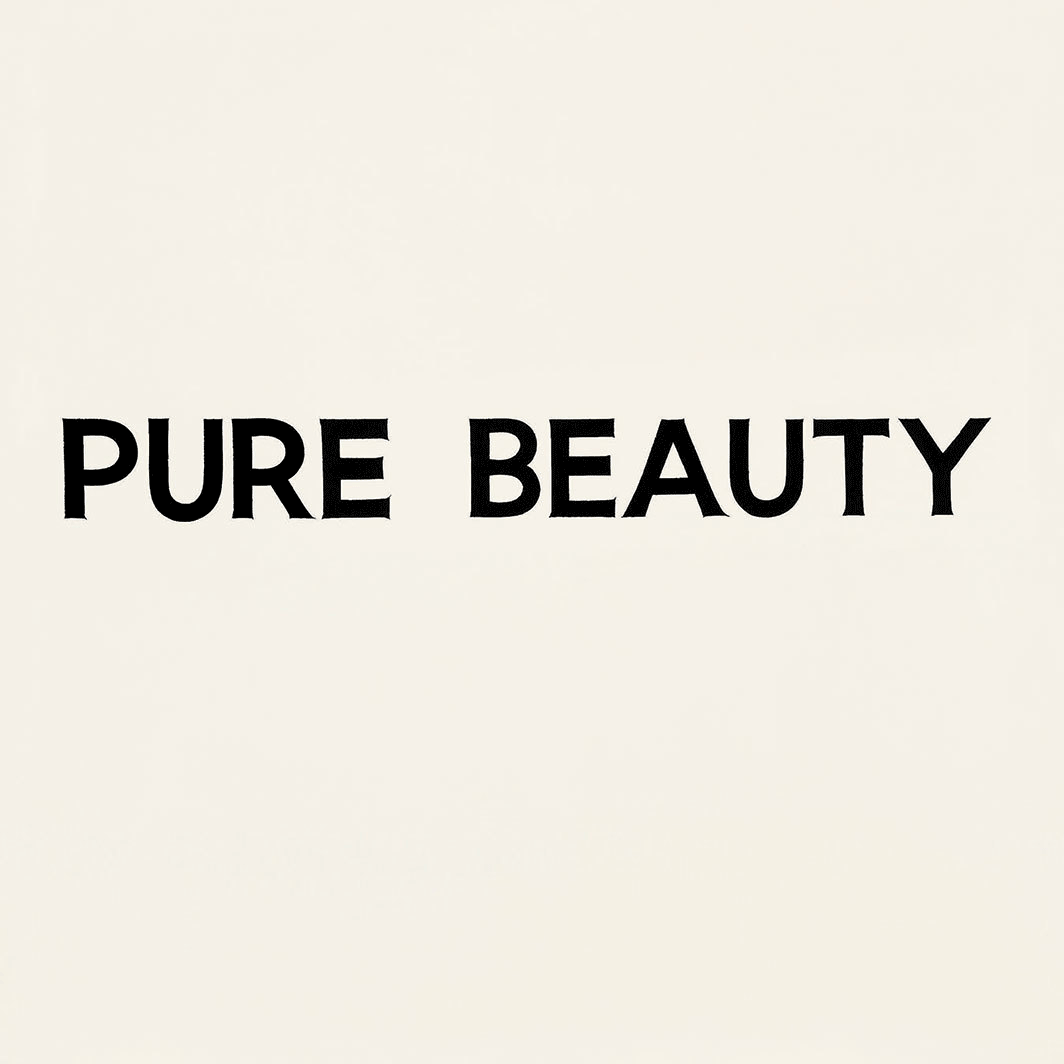
By examining “cultural and social identity through found sources,” American conceptual artist Glenn Ligon (1960-) seeks to “reveal the ways in which the history of slavery, the civil rights movement, and sexual politics inform our understanding of American society.”
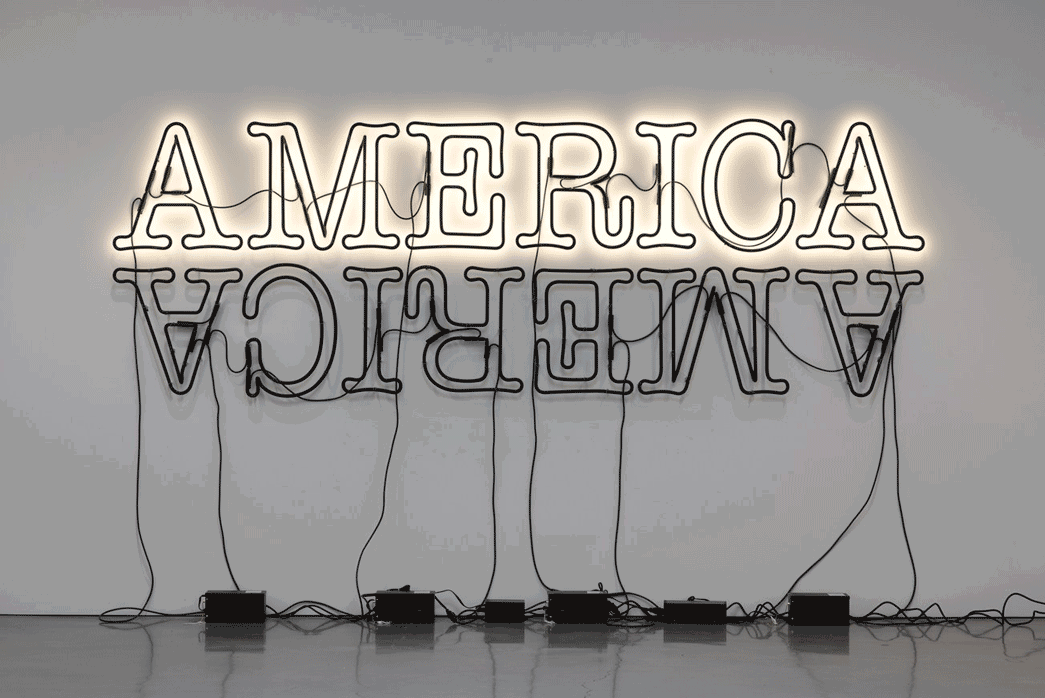
With an interdisciplinary practice, he incorporates text into diverse media including painting, neon sculpture, video, and etchings. To make his works, Ligon borrows words and phrases from several literary figures such as “Walt Whitman, Zora Neal Hurston, Gertrude Stein, James Baldwin, and Ralph Ellison, as well from more popular sources such as the comedian Richard Pryor.” As Hilarie M. Sheets communicates, Ligon’s work “transforms words into abstractions that speak volumes.” For Ligon, written language often unfolds what he refers to as a “collision of identities.” He is interested in the idea that words can be affective and evidently inhabited by their reader. While literature is often autobiographical, written language leaves space for diverse readers to embody and resonate with it––“something written by Hurston in the 20s could seem incredibly relevant and autobiographical,” to the reader who mediates it. As an artist, Ligon seeks to question what it means to “take on another person’s words as a way of talking about the self.” Furthermore his works “explore the mutability of language,” and poignantly demonstrate how excerpts of text can seemingly untether to express a panorama of semantic meaning.
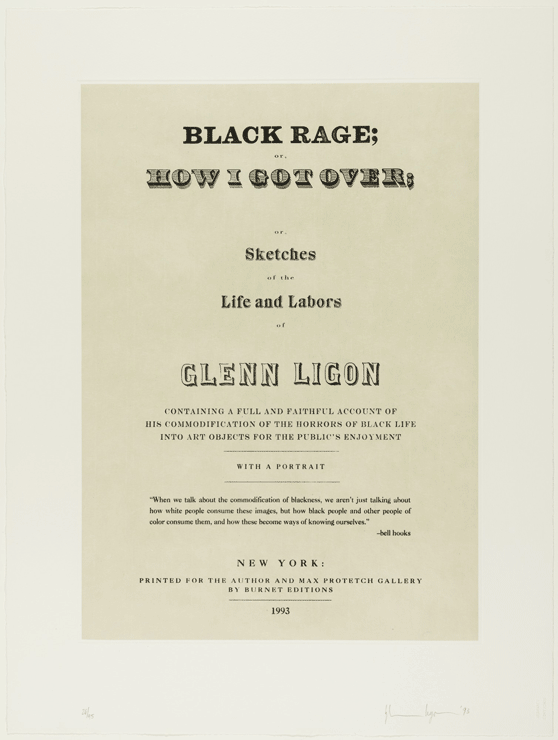
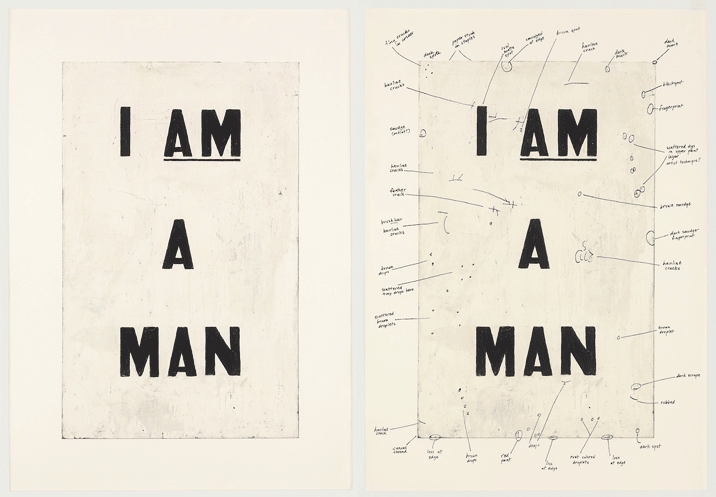
Currently living and practicing in Amsterdam, Netherlands, Nora Turato (1991-) is a Croatian contemporary performance artist interested in exploring the “the volatility of language.” Synthesizing her background in graphic design and punk music, Turato creates multi-layered works that combine exuberant performances with vivid documentations and installations of translated text. According to her representation, gallery LambadaLambadaLambada in Prishtina, Turato “translates information absorbed from her daily intake of articles, conversations, subtitles and advertising slogans into linguistic-visual scripts for videos, installations, artist books, murals and spoken word performances.” Cura writer, Tom Engels bolsters that Turato scavenges digital media, sifting through social media feeds, direct messages, and independent sales listings to find language that portrays “banal wisdoms and sensical nonsense.”
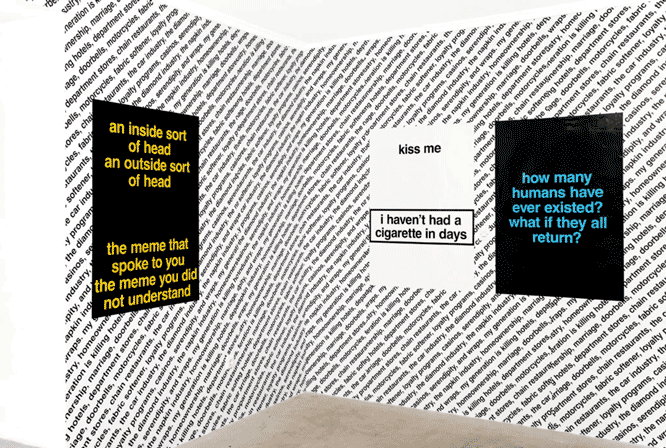
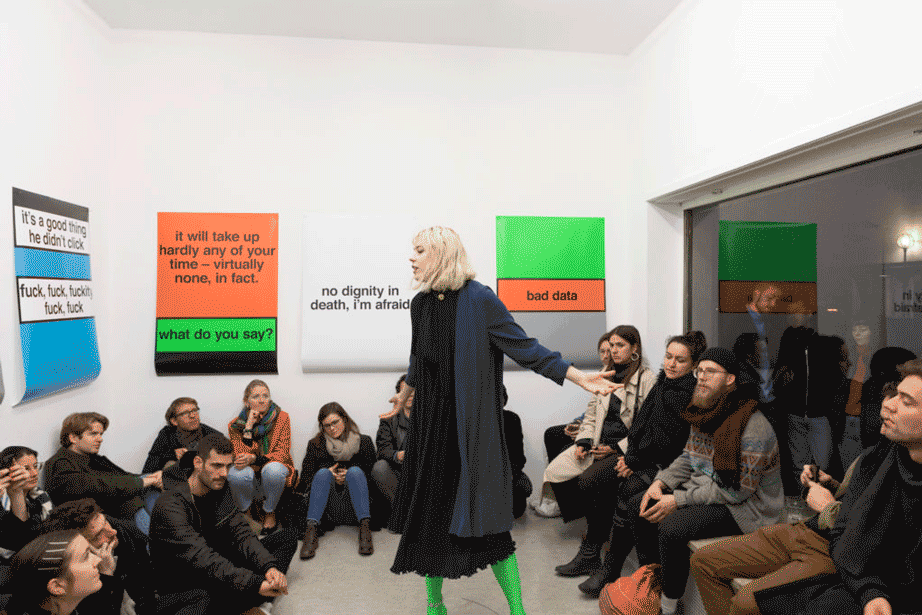
In her work, different levels of language exist on an even playing field; she reiterates notable political statements in the same breath as she does quotes spoken by reality television stars. Her deliberate connection of visual and spoken language also reveals the “discrepancy between medium and message.” In her works, graphic text attracts the audience, ingraining a memory of the language she speaks. It’s as if typographic posters are punchy headlines for her informative performances. In exploring the mediation of language and text in this current digital era–– a time where information is abundant–– Turato’s artworks contemplate and speak to “an age in which language is disconnected from its informative function and words are abstracted from meaning.”
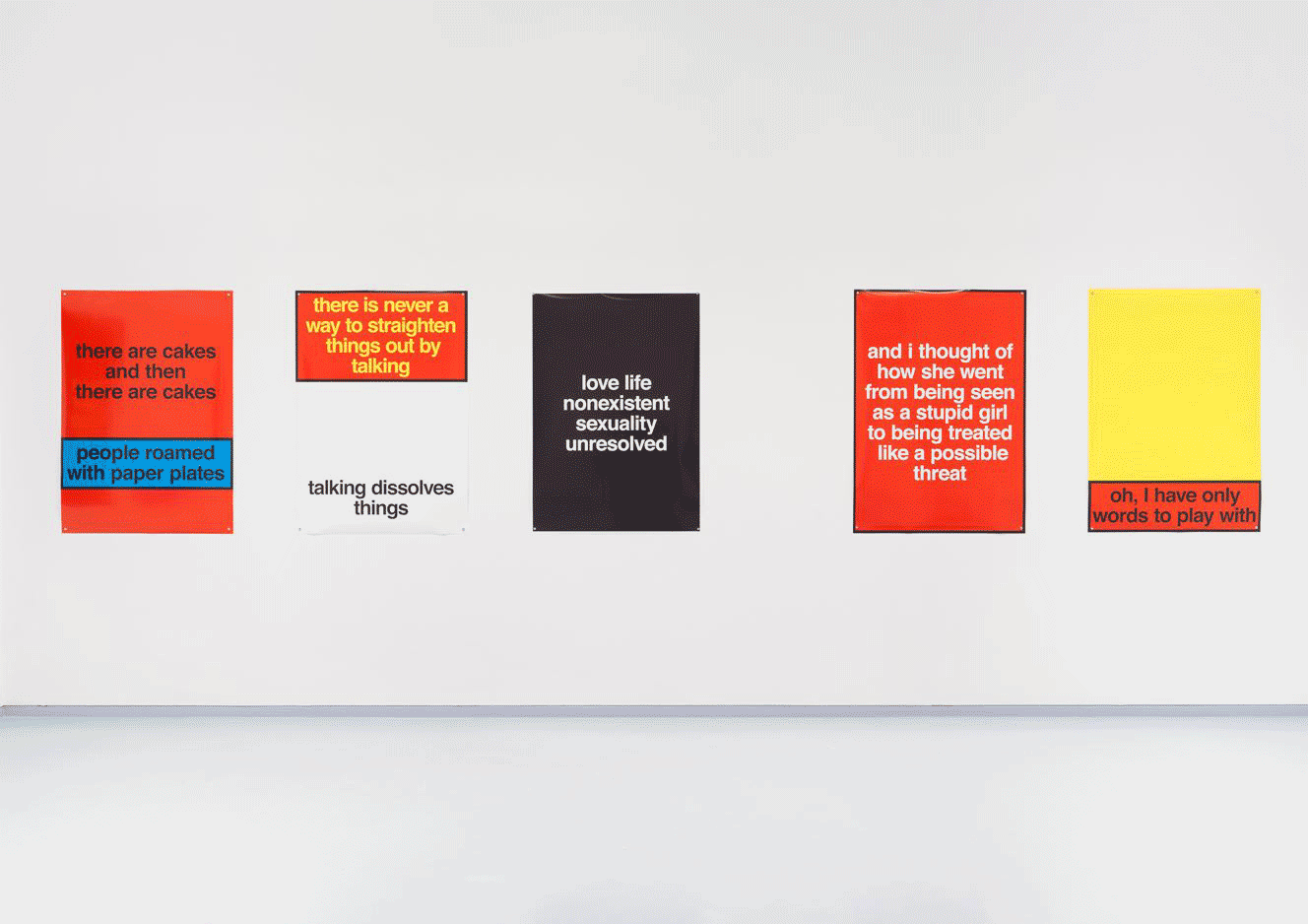
As reflected in the work of diverse conceptual artists, textual language is simultaneously material, aesthetic, and malleable. Text-based artists pursue engaged spectators as the “versatility—and power—of the written word forces the viewer to reflect,” and mediate the world in concrete ways. In text-based art, formations of language become aesthetically divine images that activate prudent learning, conjure affective experience, and support diverse interpretation. Infinitely visual as it is perceptual, text-based art aptly resonates with sizeable audiences, among diverse platforms, in profuse ways.
